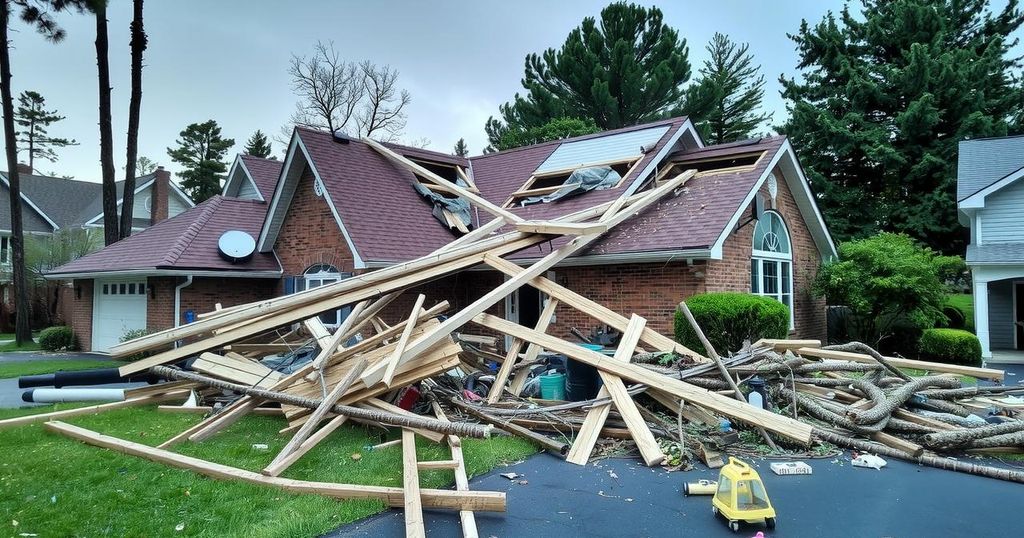Hurricane Helene: A Catastrophic Storm Devastating the Southeast
Hurricane Helene, one of the deadliest storms in recent history, hit the Southeast in September, claiming 241 lives and causing immense destruction across Florida, Georgia, South Carolina, North Carolina, and Tennessee. The storm brought heavy rains, floods, tornadoes, and widespread power outages, leading to extensive damage and a long recovery process for the affected areas.
Hurricane Helene, one of the deadliest storms in recent history, struck the southeastern United States in September, resulting in devastating impacts across five states. The storm unleashed heavy rains, leading to massive flooding and claiming a total of 241 lives. Helene made landfall in Florida as a Category 4 hurricane, causing considerable destruction in rural coastal communities. The storm then continued into Georgia, where wind damage trapped individuals and crippled infrastructure, resulting in significant fatalities. South Carolina faced tornado outbreaks alongside extreme rainfall, contributing to widespread devastation. North Carolina experienced historic flooding, with rivers surpassing previous records, and landslides causing additional casualties. In Tennessee, extreme rainfall records were broken, leading to tragic incidents associated with flooding. Thousands of homes were destroyed, and the region continues to grapple with the extensive recovery ahead.
The disaster caused by Hurricane Helene not only highlights the severe weather patterns increasingly affecting these regions but also underscores the urgent need for improved disaster preparedness and response strategies. The trajectory of Helene through Florida, Georgia, South Carolina, North Carolina, and into Tennessee illuminated the vulnerability of these areas to catastrophic flooding and extreme weather events. The recovery efforts needed will undoubtedly be extensive and prolonged, necessitating support from both state and federal levels.
Helene’s path of destruction began in Florida, where storm surges and powerful winds wreaked havoc, killing at least 12 individuals. Subsequently, as the hurricane moved through Georgia, it led to extensive damage to structures and agriculture, with a reported death toll of 33. In South Carolina, the storm produced tornadoes and record rainfall, resulting in 49 casualties and significant economic loss. The impacts worsened in North Carolina, where historic flooding and landslides claimed numerous lives, including families seeking refuge from the storm. Lastly, in Tennessee, record-breaking rainfall resulted in tragic losses, particularly at Impact Plastics in Unicoi County.
As the communities affected by Hurricane Helene work toward recovery, it is evident that the road ahead will be long and arduous. The disaster serves as a stark reminder of the profound consequences of rapidly changing climate conditions and emphasizes the necessity for resilience and preparedness in facing future storms. Many families are left mourning their losses, and local economies have been severely impacted, highlighting the urgent need for both immediate assistance and long-term recovery strategies.
The devastating impact of Hurricane Helene in September, which struck the southeastern United States, demonstrates the increasing frequency and intensity of natural disasters attributed to climate-related changes. The storm, a powerful Category 4 hurricane, traversed through five states – Florida, Georgia, South Carolina, North Carolina, and Tennessee – causing significant loss of life and extensive damage to infrastructure and communities. This event showcases the urgency for enhanced disaster management strategies and community preparedness measures, especially in vulnerable coastal and mountainous regions. It also illustrates the lasting repercussions these storms have on local economies and the physical and emotional well-being of the affected populations.
In summary, Hurricane Helene stands as a poignant reminder of nature’s power, resulting in profound losses and ongoing challenges for recovery in the southeastern United States. With a total of 241 fatalities and extensive property damage across five states, the storm highlights both the immediate dangers of extreme weather events and the critical need for comprehensive disaster response and preparedness. The path of recovery is not a solitary journey for the affected communities; it calls for collaboration at all levels, underscoring the importance of resilience in the face of climate change and unpredictable weather patterns.
Original Source: www.usatoday.com




Post Comment